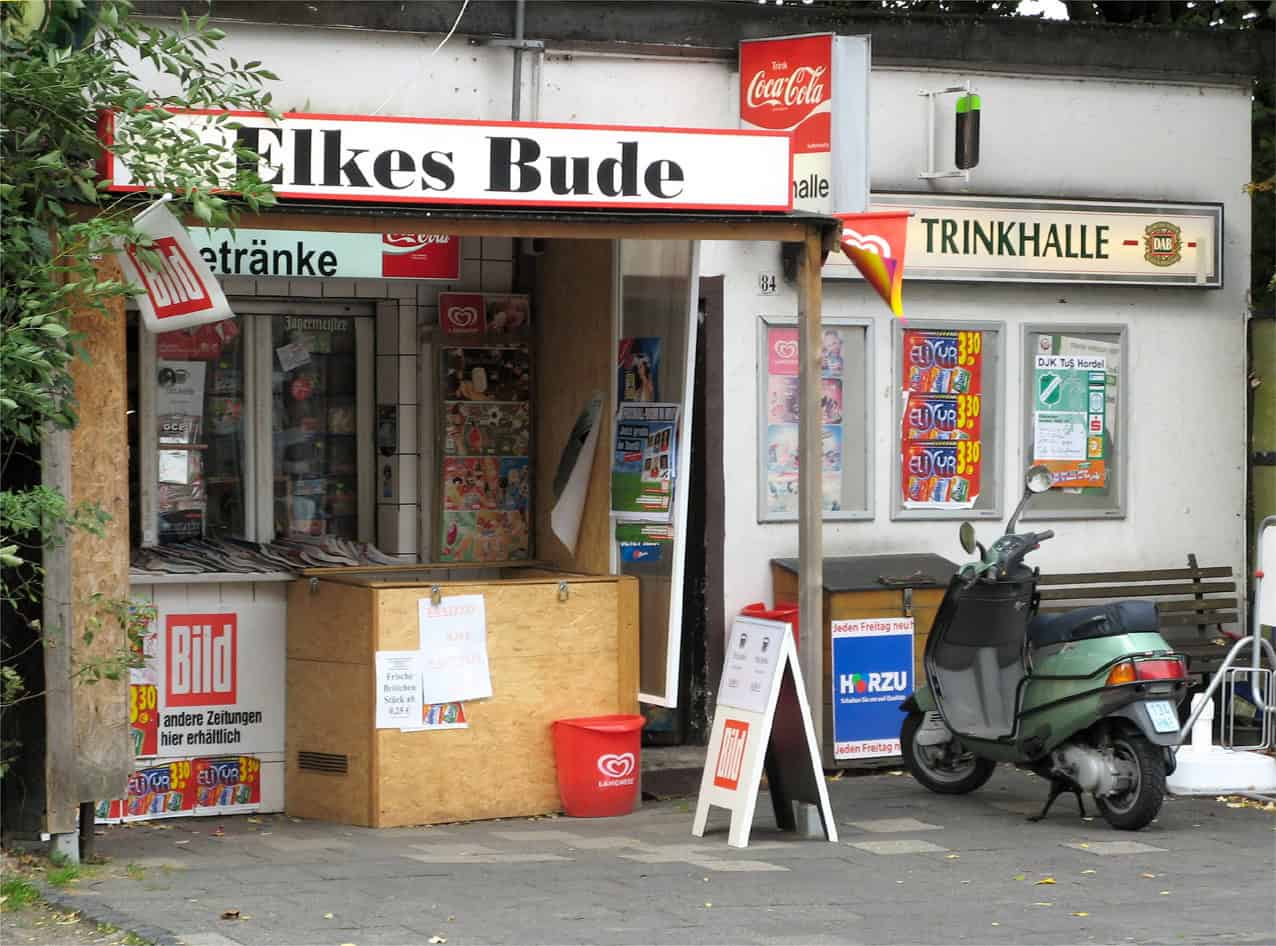There is probably no other place that embodies the Ruhr area so much and at the same time is its own cliché. Sure, in the Rhineland, there are "kiosks" and "drinking halls", in Berlin the "night shop" and in the Frankfurt area even the "water house". However, that folkloric, cozy booth magic seems to reside only in the sales huts on the streets of the region. Even if the booth has been laughed to death in average comedy sketches, the myth lives on – where prejudice and reality meet: in people's everyday lives.
The short walk to beer, cigarettes, and sweets is indispensable for many residents. Aesthetically speaking, something would be missing without the booth: the charming disarray, the overabundance of little things, the flashy juxtaposition of newspaper, ice cream, and cigarette advertisements, and not least the "display windows" that showcase the assortment. The social aspect would also be neglected. The quick chat about politics, football, or family health is part of it. Whereas people used to meet at the fountain in rural idyll, today the booth next door has taken on the function of exchange.
In general – the "display windows". You can't get enough of the absurd mixture of the display. There stand schnapps bottles next to tampon packages and football stickers, followed by boxes filled with brightly colored sweets, the small prices enthusiastically handwritten directly on the display windows with a felt-tip marker. Here, childhood has survived in the form of cola crackers, chewing candy, and sour fries, and the mixed bag still sells like hotcakes.
Even the plain licorice snail holds its place on the shelf and has thereby become the trademark of the "1. Kioskclub" from Dortmund, which has taken on the task of "exploring and maintaining kiosk culture worldwide". Its members proudly wear the snail embroidered as a patch and a commitment to booth culture. The club was founded by artists and private individuals in the World Cup year of 2006 in collaboration with the Dortmund museum at Ostwall as part of the exhibition "Refreshment Pavilion – Visiting Friends". From the outside, it looked as though a kiosk had been opened in the museum's studio-gallery, complete with a sales window, newspaper stand, and Langnese flag. Inside, the cultural phenomenon of the kiosk was musealized and served as a backdrop for events and symposiums. The club seeks publicity and offers "kiosk rallies": city tours by bicycle that visit the most important booths.
Architecturally, the booth also has its charms. The range varies from hastily squeezed kiosks in construction gaps to freestanding pavilions. Near the Dortmund U, the brewer "Bergmann-Bier" has revived a 1950s kiosk and sells its beer not only to the young trendy audience. Within the hut scene of the Ruhr area, curiosities have emerged, keyword: expansion of offerings. In Duisburg-Wedau, there is a "drinking hall for humans and dogs", where dog food and collars are available. Or you see the kiosk where a notice on the ice cream freezer informs about "funerals at Hartz IV prices", illustrated with a Christian cross and a Turkish crescent moon.
The booth has not only developed into a cultural phenomenon in the Ruhr area. A few ICE stations further east, the architectural office "Raumlabor Berlin" is exploring booth culture under social-aesthetic aspects. On their website, they deal with the phenomenon of "kioskization" in Eastern Europe and examine changes in street trade due to the establishment of kiosks in formerly socialist cities like Halle, Łódź, and Moscow. With the turnaround, a booth culture emerged in the prefabricated housing estates that replaces entire supermarkets. Besides the research findings, which are available as a film and book, there is also the "My Kiosk Shopping Bag", which can fit a complete booth purchase: beer, newspaper, lighter, and a pack of cigarettes. That is enough to be happy, in Bratislava and Wattenscheid.
